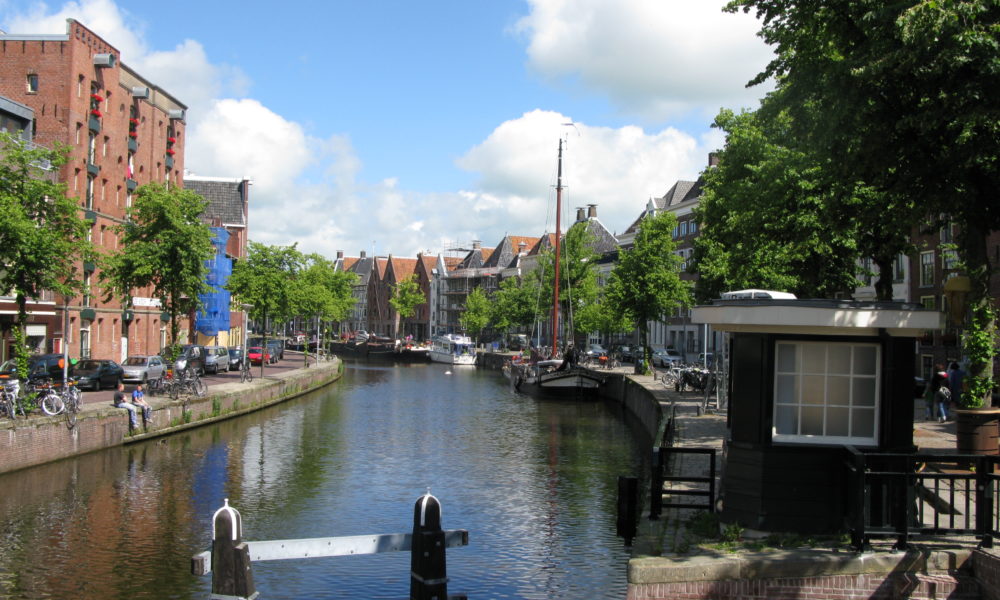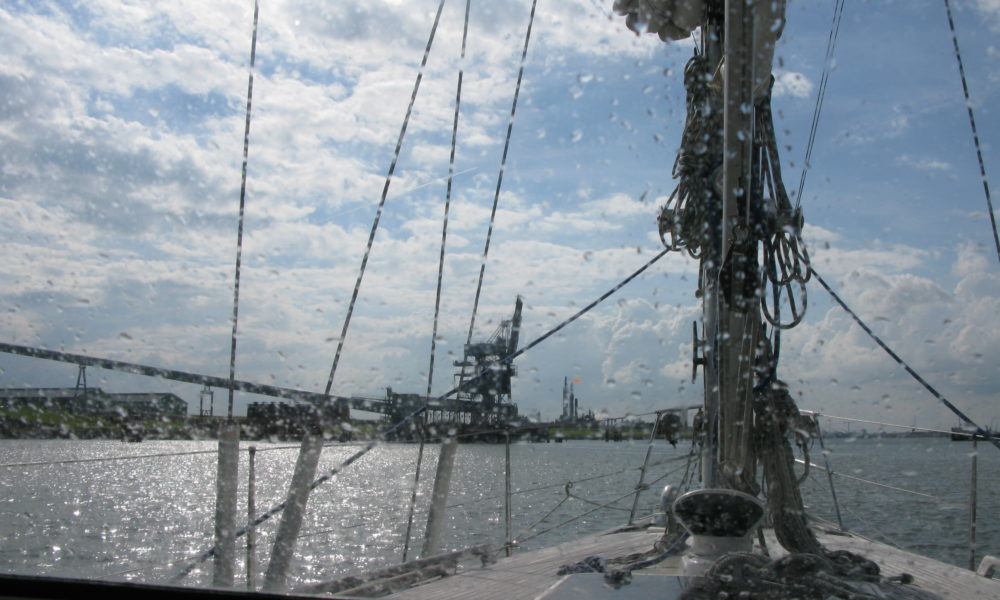
Groningen is a wonderfully varied city
53° 12′ 43.29” N 6° 34′ 13.4616” E
July 16, 2012
The lock in Delfzijl lowers us a meter, maybe one and a half. In front of us lies Ems Canal. 26 km straight, dug channel through agricultural land. The logistics are formidable. We pass eight bridges with virtually no latency. The bridges just goes up, when we approach.
In Groningen we turn into Oesterhaven, a marina right ind the middle of the city. For the first time with a formidable port master, that is ready with a megaphone to guide us into a proper berth.
Groningen is a wonderfully varied city. Old and new. Large and international. Young and alternative. 20,000 college students put a mark on the townscape. One senses that Holland even more than Denmark has been oriented towards international trade and travel. A maritime nation, that has channeled all sorts of peoples back to Holland and managed (?) to integrate them. Well, we see of course only the surface.
We get an impression of the city, and decides to have an extra day in Groningen. It is a bit like our old berth in Christianshavn canal, Copenhagen. Harbour-cruisers sail past and we hear guides explain, what the tourists see.
The weather is solid. Rain, rain, rain, rain.
Log-book: Sailed at 10:00. Destination Groningen. Arrival 13:00. Weather: So much wind, that we think: Lucky we are not out on the open sea today. Southwest 11 and up meters / second.

Still we do not understand the tide completely
53° 19′ 48.864” N 6° 55′ 51.1176” E
July 15, 2012
Up at six o’clock. Immediately we start. We follow Jörg’s advice. Beautiful morning. Even with small pieces of blue and glimpses of the sun. But the wind is again contrary, and waves are higher than we know from home.
We are – mildly speaking – uneasy in the sea. We have to pull op the main sail to stabilise the boat’s movements. Per would like to go on deck and hoist the sail, but Kirsten insists that it’s her job. She believes, that the chances are greater, that Per can save her from the water, if she falls, than for her to save Per.
Jörg’s schedule does not hold at all. It takes us six hours to reach Borkum, not four. In addition it takes a few hours to round this island, and we completely misses the tidal push in the Ems river, which should have given us an extra four knots on our way to dutch city Delfzijl.
Ems River is depressingly sad. Huge power plants dominates the entrance. And with no other boats on the water all seems desolate and bleak. Add to this the constantly gray weather.
On a “plaat”, as the Dutch call the surfaces exposed when the tide recedes, we see a seal. Further along the same plaat are a bunch of tourists boarding a ship after having been on a Wadden Sea tour.
Tide is a strange phenomenon. Now we have sailed in it for a week, and we still do not understand it completely, despite practical experience and tons of tidal informations.
But it is no longer quite the mystery, that it was before, we set keel into it for the first time.
Our first observation is, that you can avoid it at a great lenght. If you consciously opt the areas being reclaimed and ensures, that the depth even at low tide is ok, then only remains the question of getting more or less push out of the tide. The one and a half knots with or against, that we have known at home in Danish Svendborgsund may well in these waters be four knobs counter or co-current flow. It can turn into an advantage, and it can turn into a disadvantage.
Our second observation is that certainty about the current status of high tide or low tide can make it possible for you to pass areas where you otherwise would think: “Damn it! Here is not deep enough.” Proper planning gives you opportunities. Jörg gave us a copy of the program “wxtide47” that graphically tells you, where you at a given location are in the tidal cycle.
Our third observation is, that both the Germans and the Dutch have developed amazing engineering skills in creating tidal ports where pontoons rolls up the barrows, telephone pole-like pillars, and you can sleep sweetly, while water moves both two, three, four or more meters up and down below you.
Our fourth observation is more of an assertion: It does not matter if you get stuck on the ground, because if the tide is with you, eventually it will set you free again.
Delfzijl is a pure, unadulterated industrial city. But the city’s marina, Neptunus, is prima. We sleep well after 12 hours in the high waves.
Log-book: Sailed 6.00. Destination: Delfzijl in the Netherlands. Arrival 18:00. Weather: Wind from the west 10 meters per second. Almost contrary to our sailing direction. Big waves. Hammering up and down. Tiring sailing.